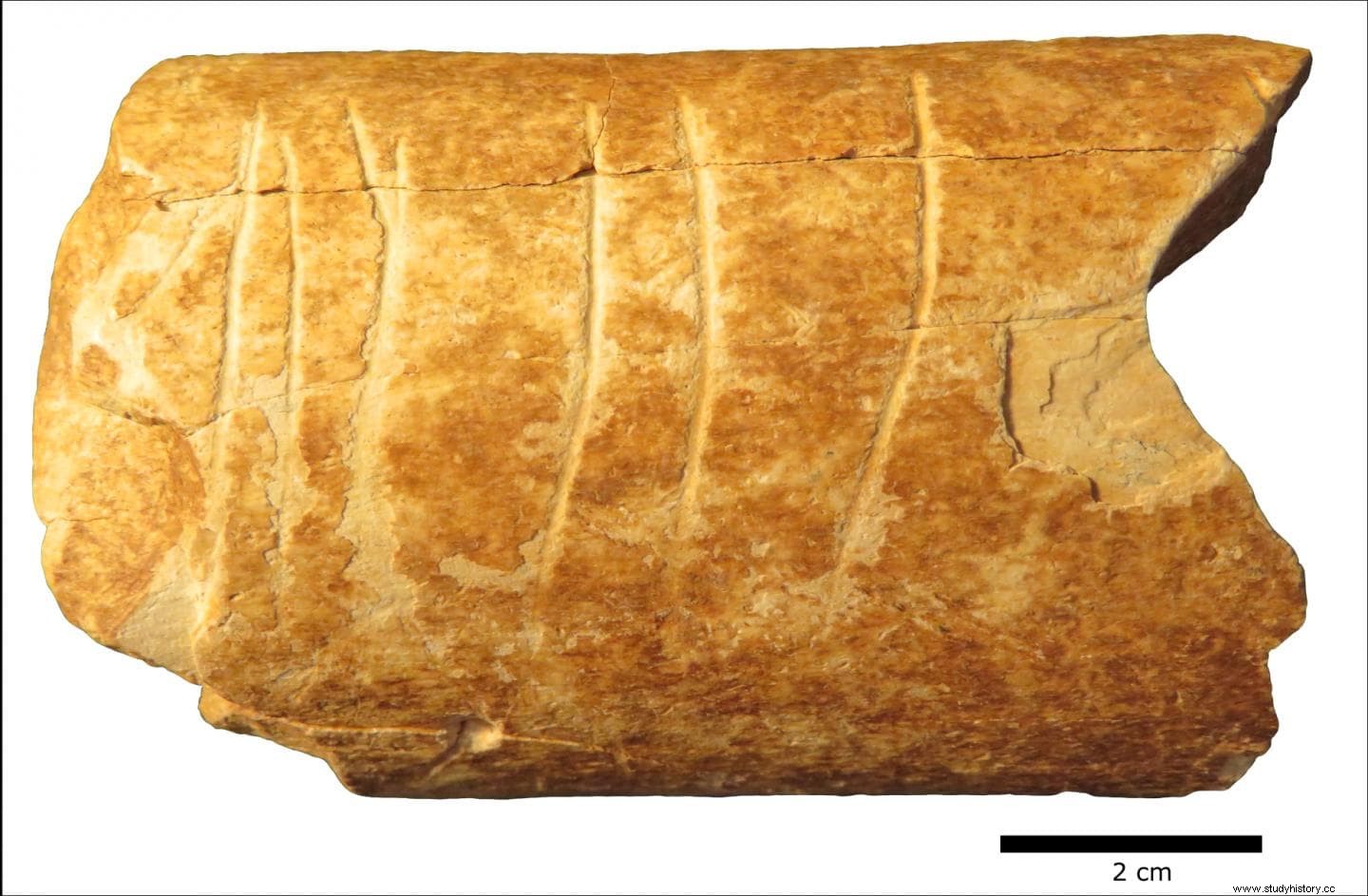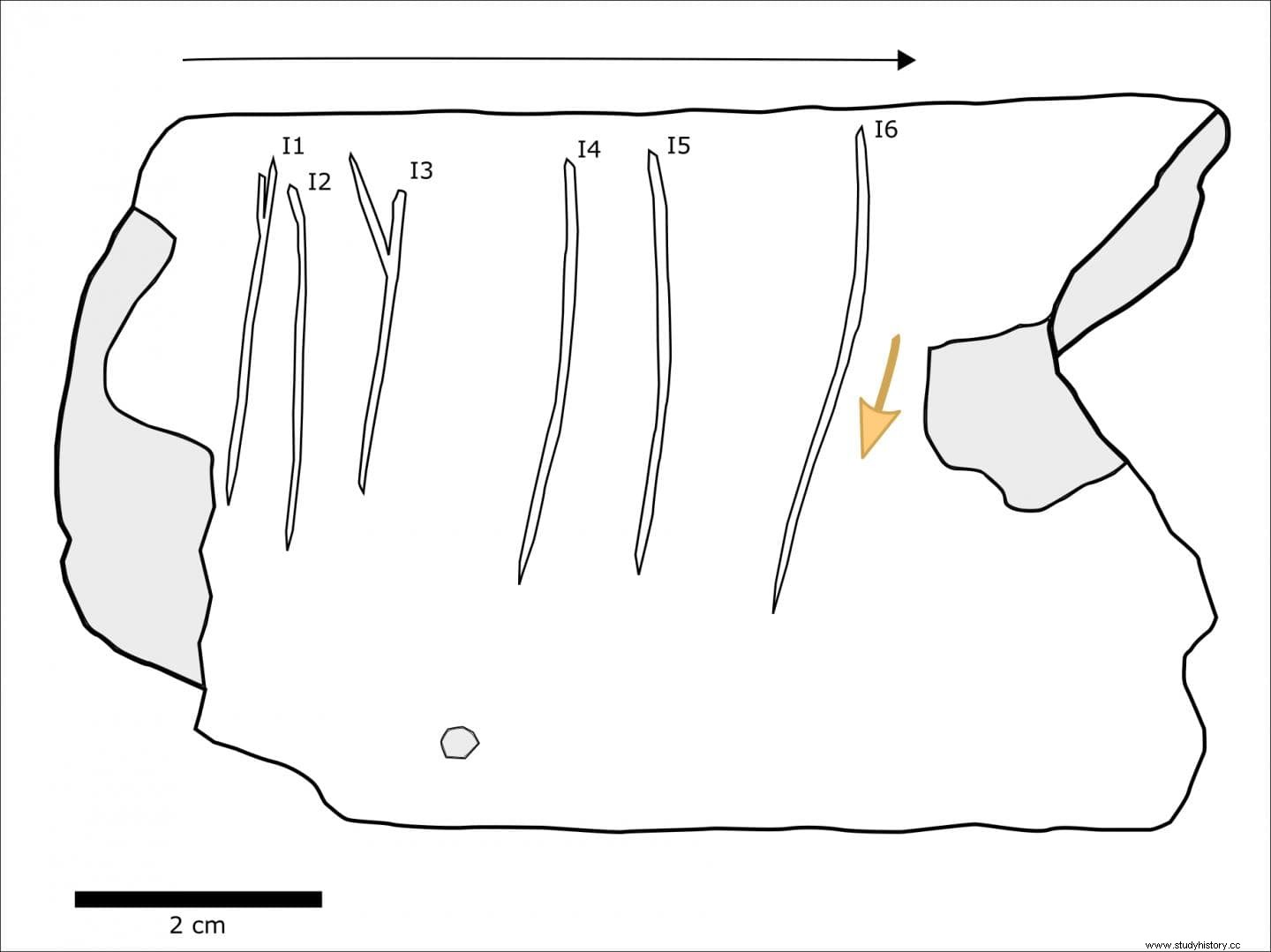Although scientists and historians have long conjectured that stone and bone carvings have been used as a form of symbolism since the Middle Paleolithic (250,000-45,000 BC), the findings supporting this theory are very scarce.
A recent discovery by archaeologists from the Hebrew University and the University of Haifa, together with a team from France's National Center for Scientific Research, has uncovered evidence of what could be the earliest known use of symbols. The symbols were found on a bone fragment in the Ramle region of central Israel and are believed to be about 120,000 years old.
Surprisingly, the fragment remained practically intact and the researchers were able to detect six similar engravings on one of the faces of the bone, which led them to believe that they were in possession of something that had a symbolic or spiritual meaning. The finding, recently published in the scientific journal Quaternary International , was discovered among a set of flint tools and animal bones recovered at a site during archaeological excavations.

Dr. Yossi Zaidner of the Institute of Archeology at the Hebrew University states that the site was likely used as a camp or meeting place for Paleolithic hunters, who then slaughtered the animals they caught there . The identified bone is believed to come from extinct large wild cattle, common in the Middle East at the time.
Using three-dimensional images, microscopic methods of analysis, and experimental reproduction of the carvings in the laboratory, the team was able to identify six different carvings between 38 and 42 millimeters in length. Dr. Iris Groman-Yaroslavski of the University of Haifa explained:Based on our laboratory analysis and the discovery of microscopic elements, we were able to conjecture that a sharp tool made of flint rock was used to make the engravings. .
The authors of the article stress that their analysis makes it very clear that the carvings were definitely man-made and could not have been the result of animal-killing activities or natural processes spanning millennia. They point out that the grooves in the discovered engravings are clearly U-shaped and are wide and deep enough that they could not have been made by anything other than human intent to carve lines into the bone.
The analysis was also able to determine that the work was done by a skilled craftsman in a single work session.

Marion Prévost of the Institute of Archeology at the Hebrew University says everything indicates there was a definite message behind what was carved into the bone. We reject any assumption that these grooves were some kind of inadvertent scribble. That kind of artwork would not have seen this level of attention to detail .
So what was the message behind the six lines on the bone? According to the authors this engraving is most likely an example of symbolic activity and is the oldest known example of this form of messaging being used in the Levant. Our hypothesis is that the choice of this particular bone was related to the status of that animal in that hunting community and is indicative of the spiritual connection that the hunters had with the animals they killed .
Dr. Zaidner said:It is fair to say that we have discovered one of the oldest symbolic engravings ever found on earth, and certainly the oldest in the Levant. This discovery has very important implications for understanding how symbolic expression developed in humans. At the same time, although it is not yet possible to determine the exact meaning of these symbols, we hope that continued research will uncover these key details .
